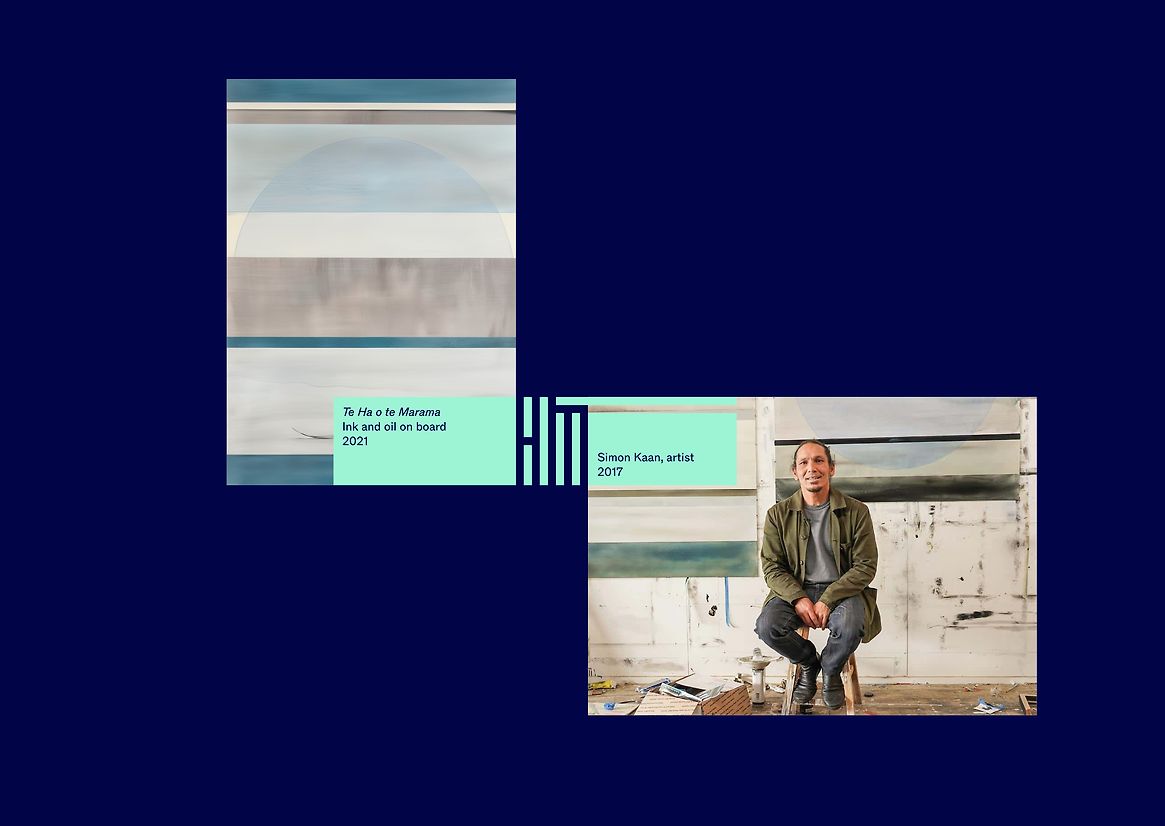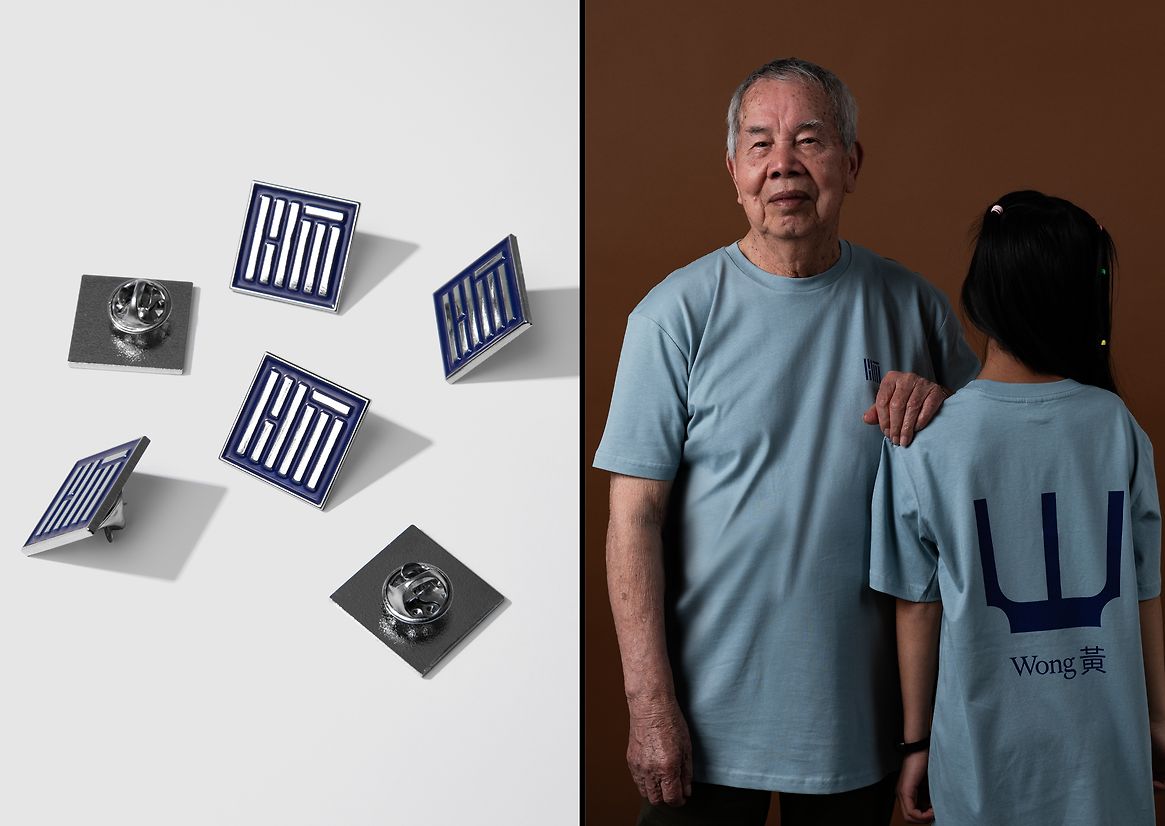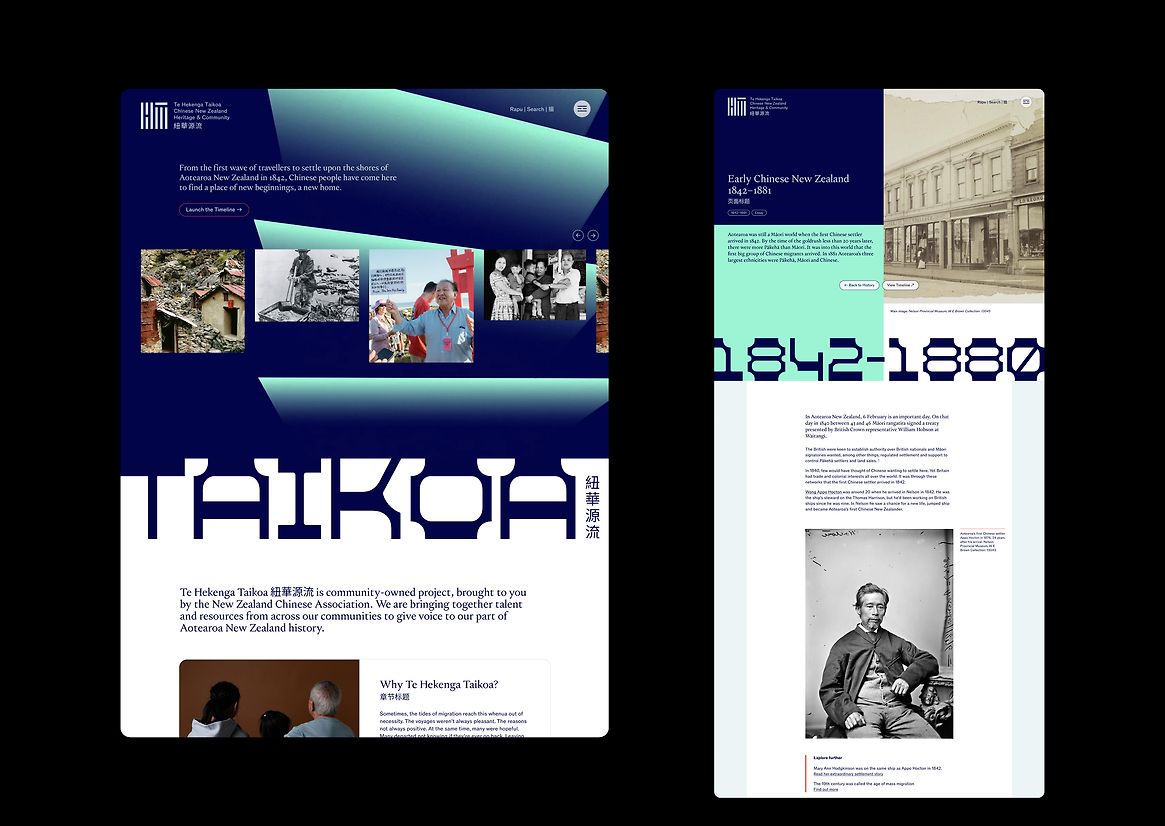Credits
-
Pou Auaha / Creative Director
Jef Wong -
Pou Rautaki / Strategic Lead
Sam O'Flaherty -
Pou Taketake / Cultural Leads
Danny Karatea-Goddard, Anihera Zhou, Megan Meiling Chong, Nigel Chee, Simon Kaan, Ripeka Goddard, Dr Valance Smith, Maru Karatea-Goddard, Mikaela Joe, Te Kiwa Goddard
-
Ringatoi Matua / Design Director
Liam Ooi -
Kaituhi Matua / Copywriter Lead
Sam O’Flaherty
-
Ngā Kaimahi / Team Members
Kirsten Wong, Nigel Murphy, Chloé Griveaud, Inhyuk Phillip Kim, Anzac Tasker, Luke Guilford, Caitlin Thompson, Dave Black, Nicky Lloyd, Anthony Brosnan, Jenanne Burnell, Andi Darmika, Nicola Morris, Caroline Santos -
Kaitautoko / Contributors
Esther Fung, Bickleen Fong, Young Tong Shing, Joe Yue Sing, Dr James Ng, Dr David Fung, Dr Henry Chan, Gordon Wu, Charles Sedgwick, Leslie Wong, Dr Manying Ip, Meng Foon, Helene Wong, Gilbert Wong, Emma Bettle, Bev Tso Hong, Jo Fothergill, King Tong Ho, Trevor (Sew Hoy) Agnew, Jenny (Sew Hoy) Agnew, Manying Ip, Ruth Lam, Lily Lee, Lynette Shum, Renee Liang, Tze Ming Mok, Julia Bradshaw, Darrell Wu, Stanley Zeng, Ya-Wen Ho, Matilda Boese-Wong, Gilbert Patten-Elliott, Eda Tang, Nathan Blundell, Seb McLauchlan, Chris Tse, Nicholas Shackleton, Chinese Poll Tax Heritage Trust, NZ Chinese Association, Ministry of Education, Lotteries National, Ethnic Communities Development Fund, The Education Consultation Group
-
Client
Te Hekenga Taikoa










Description:
Since 1842, Chinese settlers in Aotearoa New Zealand have endured hardship, exclusion, racism and internalised shame. But among these stories of hardship are tales of hope, connection, and positivity.
These narratives form the collective identity of Chinese New Zealanders, yet have often been hidden away, leading to a lack of a sense of belonging and understanding among current generations, highlighted by a Youth19 survey, which showed higher rates of depression among young Chinese New Zealanders compared to European students.
To address this, the New Zealand Chinese Association aimed to create a history website, empowering Chinese New Zealanders to reclaim sovereignty over their histories and giving all New Zealanders a chance to understand the Chinese New Zealand experience.
In building an identity around this, we drew from tri-cultural foundations, acknowledging and uplifting Māori as mana whenua of this place Chinese New Zealanders now call home.
The gifted name, Te Hekenga Taikoa, ‘The Joon1guok3 Blessed Happy Migration’,
was created with multiple meanings in te reo Māori and Cantonese/Mandarin.
‘Hekenga’ is an existing kupu, meaning migration or voyage. ‘Taikoa’ is a new kupu to describe Chinese New Zealanders. ‘Tai’ is te reo Māori for tide, while in Cantonese and Mandarin it means elevated and intensified. ‘Koa’ in te reo Māori means joyful, elated. In Cantonese it is a transliteration of guók/guó — referencing Joon1guok3/Zhōngguó (Middle Kingdom) — the widely recognised term for China throughout the wider Asian world.
The Cantonese name, 紐華源流 (nau2 waa4 jyun4 lau4/niǔ huá yuán liú) references New Zealand – 紐華 (nau2 waa4/niǔ huá ). 源流 (jyun4 lau4/ yuán liú) means origins and headwaters. The 氵of 源 and 流 means water, referencing the living and ever-evolving nature of history, culture and identity.
For the design idea, we extended upon the oceanic concepts in the name with ‘always revealing more’, inspired by the movement of tides and waves of migration, and how they connect us across the seas, binding us through history, culture and identity.
We wanted to create a visual expression not of ‘Chinese’ culture, but of ‘Chinese New Zealand’ culture. Inspired by the bicultural foundations of the name, we challenged cliché representations of Chinese-ness in Western societies and looked for further affinities between Chinese culture and te ao Māori.
The elements of the identity are a reflection of this – from the linear forms of the logo which reference the flow of knowledge and time; to the colour palette which draws from the important connection our natural world in both traditional Chinese culture and te ao Māori; to the striking display typeface which is visually inspired by the gateways used to invite people into both of our worlds: the paifang and waharoa.
This kaupapa is a gift from one generation to the next. More than just a history website, it is a living expression of Chinese New Zealand identity that provides the foundations to finally share their truth:
We are diverse. We are tangata tiriti. We are New Zealanders and this is our home.